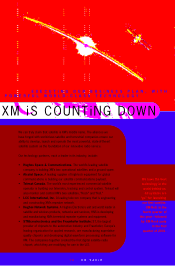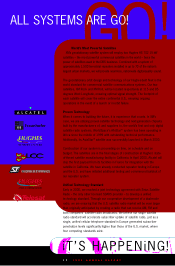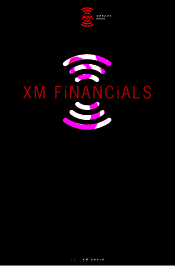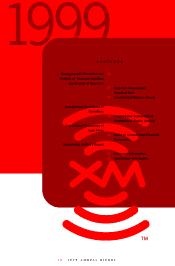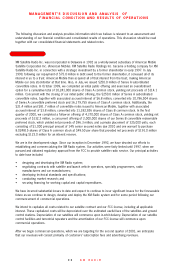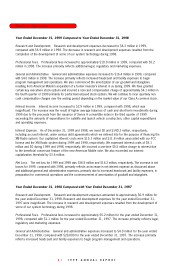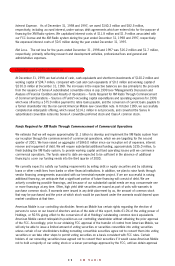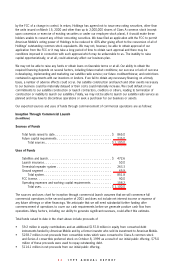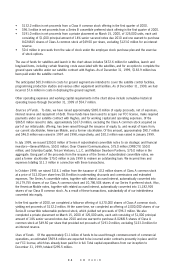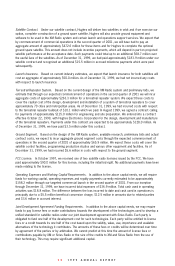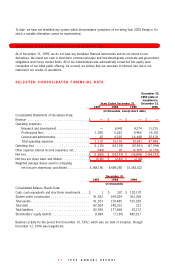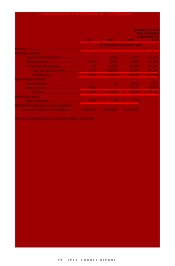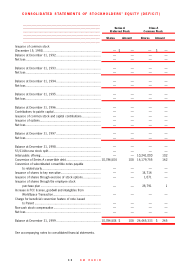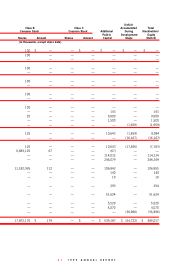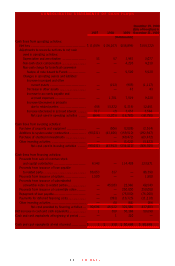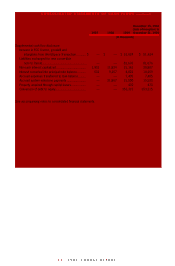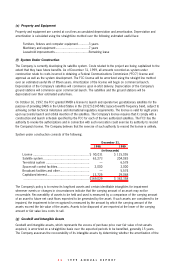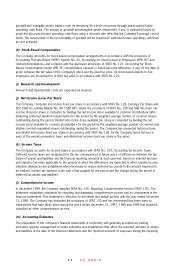XM Radio 1999 Annual Report Download - page 28
Download and view the complete annual report
Please find page 28 of the 1999 XM Radio annual report below. You can navigate through the pages in the report by either clicking on the pages listed below, or by using the keyword search tool below to find specific information within the annual report.
26 XM RADiO
Funds Required for XM Radio Following Commencement of Commercial Operations
Even after commencement of commercial operations, we expect to need significant additional funds to cover
our cash requirements before we generate sufficient cash flow from operations to cover our expenses. We
cannot accurately estimate the amount of additional funds needed, since it will depend on business decisions to
be made in the future and revenues received from operations, but we expect the amount to be substantial.
Funds will be needed to cover operating expenses, marketing and promotional expenses including an extensive
marketing campaign in connection with the launch of our service, distribution expenses, programming costs and
any further development of the XM Radio system that we may undertake after operations commence. Marketing
and distribution expenses are expected to include joint advertising and joint development with and manufacturing
subsidies of certain costs of some of our manufacturers and distribution partners. We cannot estimate
accurately the total amount of these operational, promotional, subscriber acquisition, joint development and
manufacturing costs and expenses, but they are expected to be substantial.
We will have significant payment obligations after commencement of operations under our distribution agreement
with General Motors. We will pay an aggregate of approximately $35 million in the first four years following
commencement of commercial service. After that, through 2009, we will have additional fixed annual payments
ranging from less than $35 million to approximately $130 million, aggregating approximately $400 million. In
order to encourage the broad installation of XM radios, we have agreed to subsidize a portion of the cost of XM
radios and to make incentive payments to General Motors when the owners of General Motors vehicles with
installed XM radios become subscribers for the XM Radio service. We must also share with General Motors a
percentage of the subscription revenue attributable to General Motors vehicles with installed XM radios. This
percentage increases until there are more than eight million General Motors vehicles with installed XM radios.
This agreement is subject to renegotiation if General Motors does not achieve and maintain specified installation
levels, starting with 1.24 million units after four years and thereafter increasing by the lesser of 600,000 units
per year and amounts proportionate to our share of the satellite digital radio market.
We currently expect to satisfy our funding requirements for the period following commencement of commercial
operations in substantially the same manner as our requirements prior to commencement of commercial operations.
Year 2000 Readiness
Many currently installed computer systems and software products are coded to accept only two-digit entries in the
date code field. Many such systems will need to accept four-digit entries in order to distinguish 20th century dates
from 21st century dates. As a result, by the end of 1999, computer systems and software used by many
companies have been upgraded to comply with these Year 2000 requirements. Otherwise these systems may
cause miscalculations that will interfere with business activities or simply fail to work. When we use the terms “Year
2000 Ready” or “Year 2000 Readiness,” we mean that customers will not experience any material difference in
performance and functionality of our networks as a result of the date being prior to, during or after the Year 2000.
We began to assess our Year 2000 Readiness in mid-1998. We have completed the identification, necessary
modification and testing of all our current systems, which we believe are Year 2000 compliant. This required no
significant expense. Because we are a development stage company and do not expect to commence
commercial operations until the second quarter of 2001, as of the date of this report, we have not experienced
and do not expect any significant operational or financial problems for our company as a result of Year 2000
issues. Our existing technology development contracts require Year 2000 Readiness, and we require Year 2000
Readiness in all new contracts that we enter.
In addition to our internal review process, we have had communications with certain significant third parties with
which we do business to
• evaluate their Year 2000 Readiness and state of compliance; and
• determine the extent to which our systems may be affected if they fail to remediate
their own Year 2000 issues.


